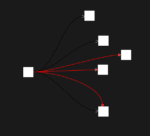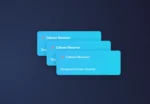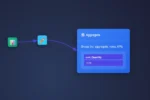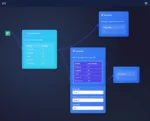
by tyler garrett | May 27, 2025 | Data Management
In a technology ecosystem rich with complexity, data acts as an organization’s digital lifeblood—flowing, evolving, and connecting each system, process, and stakeholder. Yet, as data assets scatter across cloud applications, data lakes, analytics tools, and legacy databases, the origin and transformation of each piece of data often become obscured. Understanding the complete journey of your data—its genealogy or lineage—is crucial when it comes to accurate analytics, regulatory compliance, data quality governance, and insightful decision-making. By clearly tracing data elements across systems, tech-savvy organizations establish strategic clarity, maximizing both business agility and data utility. Welcome to the dynamic practice of data element genealogy tracing—a critical methodology enabling organizations to harness fully the transformative power of data.
Decoding the Importance of Data Element Genealogy
Data element genealogy, often referred to as data lineage, enables organizations to track data throughout its lifecycle—from inception to its consumption in analytics or applications. Like tracing family lines on a genealogy tree, organizations can similarly capture where data originates, showing clearly all transformations, impacts, and end-points as data moves across platforms. This transparency is essential for maintaining data accuracy and consistency, showcasing trustworthiness of insights generated by analytic platforms. For organizations utilizing leading analytics solutions—such as those we regularly implement through our Power BI consulting services—robust genealogy tracing quickly surfaces the root causes of data quality issues, streamlining troubleshooting and expediting resolutions.
Furthermore, data governance regulatory mandates—like GDPR, CCPA, and industry-specific compliance frameworks—demand precise tracking of where personal and confidential data resides throughout its lifecycle. A clearly structured lineage map helps facilitate privacy policy implementations, making the user experience transparent and compliance more intuitive, as we’ve explored previously in our post on enhancing user experience through clear privacy policies. Consequently, rigorous data genealogy tracing transcends operational efficiency, directly supporting strategic trust-building across customer-facing practices, analytics-driven decisions, and regulatory compliance.
The Anatomy of Effective Data Genealogy Tracing
Starting at the Source: System and Data Discovery
Effective data lineage tracing starts by thoroughly identifying the foundational location where data originates. Data architects must undertake meticulous system and data discovery—inclusive of gathering metadata, understanding database schemas, data table relationships and performing deep dives into data storage structures. These initial investigative tasks usually involve working closely with underlying database infrastructures, such as MySQL databases frequently encountered in diverse tech environments. As such, teams must ensure familiarity with foundational database implementations—a process we’ve simplified for clients through our guide on how to install MySQL effectively.
Understanding the point-of-origin also involves validating data formats, ensuring alignment with expected schemas, and implementing data quality measures. Once identified, documented schemas, standards, and naming conventions should anchor your genealogical mapping, providing traceability back to the initial source and ensuring reliability throughout hierarchical lineage views.
Documenting Transformations: Data Pipeline Artistry
Both traditional ETL processes and evolving data integration patterns—including ELT and choreography-based data pipelines—present transformations occurring as data moves between systems. Regardless of pipeline style, clearly capturing and documenting this evolution is paramount. As data migrates or synchronizes between systems, such as in bidirectional synchronization, clear capturing of transformations ensures transparency and accuracy throughout analytic workflows.
Complex transformations often incorporate nuanced business logic, advanced filtering criteria, or logical operators within SQL statements—concepts outlined in our earlier detailed analysis on harnessing logical operators in SQL. Accurate documentation at this stage requires precision in capturing such logic. Advanced data pipeline techniques, including asynchronous ETL choreographies, further underscore the necessity for systematic traceability to ensure all modifications remain thoroughly transparent and maintainable at scale.
Visualizing Lineage: Data Mapping and Analytics Tools Integration
Having identified sources and transformations, the effective visualization of data genealogy offers direct operational advantages. Platforms like Power BI and Tableau have built-in capabilities that support visualization of data lineage transparently, enhancing stakeholder understanding across departments. Organizations initially leveraging these analytic tools need practical guidance to shorten time-to-value, similar to the onboarding outlined in our resource-rich step-by-step guide to installing Tableau Desktop properly.
Interactive lineage visualizations offer immediately comprehensible layout of data origin and transformations. These generate company-wide buy-in and contribute valuable insights during troubleshooting, regulatory auditing, and advanced strategic analytics initiatives. The transparent visualization of data journeys complements well-designed dashboards—like the Colibri Google Analytics Tableau dashboard we recently developed—allowing executives to confidently trust the insights presented to them.
Addressing Multi-Tenant Environments through Parameterized Lineage
The rapid proliferation and growth of multi-tenant SaaS applications require sophisticated, adaptable lineage tracing approaches, specifically tailored to multi-tenant data processing. Enterprises may operate similar data workflows across different customers, making parameter-driven pipeline tracking essential. In our exploration of parameterizing data pipelines, we’ve showcased how traceability standards adapt seamlessly to support individualized tenant-level insights.
Parameterization streamlines lineage tracking at scale while simplifying data governance complexities. Businesses can dynamically configure data lineage processes to correctly reflect the nuanced data flows unique to each tenant or sub-organization efficiently. Applying parameterization extends lineage methodologies beyond mere documentation—empowering actionable insights and intuitive management practices that strengthen governance and accelerate analytics expansions in rapidly scaled environments.
Operationalizing and Automating Data Genealogy Practices
Strategically, your organization’s data lineage tracing methodology must evolve beyond one-time exercises into systematic, fully integrated practices. Incorporating data lineage visualization and validation into automated DevOps and DataOps pipelines ensures continuous documenting and monitoring. Automation of lineage tracing provides an ongoing ability to surface data issues alerts and enables powerful predictive impact analyses proactively.
Effective operationalization leverages best-practice data governance and lineage tools—like metadata management, advanced analytics platforms, and cloud engineering solutions. Integrating CI/CD processes for data pipelines harnesses machine learning models that automatically detect lineage drift or anomalies, significantly reducing manual overhead requirements. Operationalizing your lineage practices thus creates substantial business agility advantages, truly transforming cultural data maturity into sustained innovation momentum.
Future-proofing Your Data Strategy with Genealogy Tracing
Strategic business decisions increasingly rely upon timely analytics and trust in underlying data integrity. Data lineage tracing provides reliability fundamental to any organization’s long-term digital transformation journey. Establishing lineage processes firmly embeds robust data governance mechanisms across future-oriented strategies. Applying modern lineage tracing methodologies empowers your organization by accelerating delivery speed, streamlining regulatory compliances, enhancing transparency, and promoting strategic clarity across distributed technology ecosystems.
At Dev3lop, we frequently guide decision-makers to integrate data genealogy tracing effectively, optimizing analytics-driven strategic decisions and organizational data maturity. By institutionalizing data lineage practices, organizations naturally elevate data standards, enabling unparalleled competitive intelligence, confident regulatory adherence, and sustained innovation.
Interested in integrating robust data lineage tracing across your complex systems architecture? Explore strategic data engineering, analytics, and data governance solutions with strategic clarity—begin the conversation with Dev3lop today.
Thank you for your support, follow DEV3LOPCOM, LLC on LinkedIn and YouTube.

by tyler garrett | May 27, 2025 | Data Management
In an age driven by data-driven insights, the value of published datasets cannot be overstated. Yet, as organizations increasingly open their data gateways to innovation and analytics-driven strategies, the risk of inference attacks looms larger than ever. These attacks do not breach data directly, rather they ingeniously reconstruct sensitive information from seemingly innocuous datasets. Protecting your business from inference attacks is no longer optional; it’s a strategic imperative. In this article, we’ll navigate through the intricacies of inference attacks, deciphering what makes your datasets vulnerable, and outline a robust prevention plan—because safeguarding your data is the cornerstone of analytic innovation and an engine for confident decision-making.
Understanding the Nature and Impact of Inference Attacks
An inference attack occurs when a malicious actor analyzes publicly available datasets or aggregated information and successfully deduces sensitive or private data, despite protective measures such as anonymization and encryption. Unlike conventional data breaches, inference attacks don’t require direct access to secured systems—they utilize statistical methods, advanced data relationships, and machine learning algorithms to infer sensitive information from indirect clues.
The impact of inference attacks extends far beyond compliance fines or regulatory scrutiny. The reputational damage can be long-lasting, undermining stakeholder trust and crippling industry confidence. A breach that exposes sensitive client or internal employee information through inference could derail compliance efforts and disrupt business operations. Leaders today must recognize that published datasets—despite being valuable resources for stakeholders and customers—are potential goldmines for adversaries with enough analytical firepower.
To mitigate this risk, your business first needs clear visibility into how seemingly harmless datasets might inadvertently reveal sensitive data. Strategic vulnerability assessments allow you to pinpoint datasets susceptible to inference attacks, prioritize remediation efforts, and establish robust protocols for secure publishing practices. This awareness serves as the foundational step in building your organization’s robust defense against inference attacks.
Identifying and Assessing Your Dataset Vulnerabilities
Preventing inference attacks begins with meticulous vulnerability assessments of your published datasets. A critical step toward this goal is conducting comprehensive data audits—thoroughly evaluating the linkage, correlations, and relationships present within and across datasets. This scrutiny reveals potential pathways that adversaries might exploit, sometimes even through innocuous-looking demographic statistics, public tables, or anonymized reports.
Organizations should adopt rigorous dataset sampling methods to minimize exposure risks. Applying conscientious data sampling techniques enables balanced and representative datasets to be presented publicly, without inadvertently disclosing individual-level characteristics. Moreover, proactive identification of high-risk datasets—such as those with rare values, precise geospatial coordinates, or unusual patterns—can prompt timely interventions, including further data anonymization or controlled aggregation.
Partnering with data experts ensures that your assessments benefit from in-depth analytical insight and strategic recommendations. Leveraging expertise through specialized services, such as Procore API consulting, positions you to effectively govern data integration practices, efficiently recognizing and eliminating inference attack pitfalls early in the data release pipeline. Strategic oversight and close data coordination enhance transparency, minimize risk exposure, and build trust within your management teams and among external partners alike.
Implementing Robust Anonymization and Aggregation Techniques
Structuring published datasets wisely creates an obstacle course that makes inference attacks progressively more difficult. One of the primary barriers organizations deploy involves robust anonymization techniques, such as k-anonymity and differential privacy. By establishing thresholds where individuals become indistinguishable from each other in the dataset, you drastically reduce an adversary’s capacity to isolate personal records or infer sensitive attributes.
Complementing anonymization, data aggregation serves as an additional safeguard. Aggregation effectively summarizes individual-level data into higher-level categories, maintaining analytic usefulness while minimizing granularity. Leveraging anonymization tools integrated within data transformation flows that utilize row-level security implementations helps maintain confidential information boundaries, allowing powerful analytics without unduly risking privacy.
However, the effectiveness of these methods depends heavily on rigorous planning, proper calibration of anonymization parameters, and regular reevaluation of security protocols aligned with evolving threats. Continuing education and awareness of new inference methods are crucial to maintaining robust defenses. Engaging regularly with experienced experts in data management and anonymization strategies provides your organization with continuous access to best practices and insights, ensuring risk awareness becomes second nature in your analytics workflows.
Advanced Visualization Techniques to Reduce Inference Opportunities
While data visualization remains vital to transparent communication, certain visualization practices can inadvertently expose sensitive insights. Utilizing strategic visualization tactics such as progressive disclosure in complex visualization interfaces significantly reduces the risk of inference by revealing data incrementally. By carefully structuring display levels, sensitive data remains protected behind abstracted initial views, cascading only minimally-risky aggregated layers of information to wider audiences.
Another relevant technique involves employing circular visualization methods like radial or polar charts to obscure direct data points subtly. These advanced visualization modes distill essential insights without exposing explicit record-level information, ensuring sensitive data elements often remain hidden within aggregated metrics or stylized representations.
Enhancing data presentation with secure techniques like animated transitions in interactive visualizations could further protect datasets from inferential misuse. Thoughtfully curated interactivity—coupled with accessible navigational structures—enables transparency in analytics without creating pathways for sensitive data reconstruction. Experiencing these challenges through strategic visualization consulting helps businesses maintain cutting-edge visualization practices that balance innovation, transparency, and data privacy.
Layering Security Measures with Advanced Data Governance Solutions
A comprehensive strategy toward inference attack prevention relies heavily on strong cybersecurity, data governance, and thoughtful system architecture. Multi-layered data protection frameworks that incorporate advanced authentication techniques, including SAML forward proxy authentication techniques, effectively restrict unauthorized access while serving authorized stakeholders with relevant information securely.
Increasingly, organizations are recognizing that data governance tools should integrate closely with innovative database technologies. Selecting platforms designed explicitly for securing sensitive embeddings—such as recommended by our experts in identifying effective vector database selection criteria for embedding-based applications—is crucial in protecting organizational intelligence from inferential attacks and exploitation.
Additionally, assessing overall data pipeline security, from warehousing to the frontline user endpoints, safeguards your entire data ecosystem. Organizations uncovering the need for more robust infrastructure frequently observe tell-tale signals, clearly outlined in our recommended overview of signs your business needs a data warehouse. Implementing dedicated data warehousing solutions reinforces strong access controls while enhancing analytics sophistication, resulting in better-protected datasets and efficiently governed data landscapes.
Embedding an Organizational Culture of Privacy and Security Awareness
Inference attack prevention extends beyond technical measures alone; it necessitates fostering a company-wide culture of data privacy awareness and security mindfulness. Unfortunately, many organizations underestimate the human dimension of data privacy. Comprehensive employee training programs, focused workshops, and periodic audits—all aimed at emphasizing the proactive governance of data—should be thoroughly integrated throughout your organization’s culture, from teams tasked with publishing data to executive decision-makers.
Data innovation requires vigilant and proactive security consciousness across all organizational levels. Leaders ought to leverage collaborative and consistent reinforcement of data security principles and awareness to ensure employees inherently recognize and mitigate the potential threats often lurking in seemingly innocent publicly shared datasets. Cultivating this conscientiousness guards against unintentional vulnerabilities, fosters accountability, and significantly enhances resilience against inference attacks.
Equally important is to regularly revisit and refine inference prevention strategies—partnering with experienced consulting advisors to align these practices with compliance updates, industry-level best practices, and evolving technologies. Guarding against inference attacks successfully blends organizational culture change with technological solutions, resulting in stronger customer confidence, heightened organizational accountability, and ultimately, sustained competitive advantage.
Thank you for your support, follow DEV3LOPCOM, LLC on LinkedIn and YouTube.

by tyler garrett | May 27, 2025 | Data Management
In today’s digital landscape, organizations face an ever-growing challenge to safeguard their data without stifling agility and innovation. Data, rightly considered the lifeblood of modern enterprises, holds unmatched power coupled with significant risks when handled carelessly. As enterprises pursue their journey toward becoming data-driven organizations, effective metadata governance strategies like metadata-driven default security classification become critical. This innovative security approach leverages metadata attributes embedded within your data assets to ensure appropriate measures of classification and protection from inception to analytical use. Imagine a framework that intuitively classifies sensitive information the moment it enters your data ecosystem—minimizing manual intervention, streamlining compliance, and enabling teams to focus on deriving actionable insights. Let’s explore the promise of metadata-driven data governance and why it should become foundational to your organization’s data management strategy.
Understanding Metadata-Driven Security: The Fundamental Concept
Metadata-driven security revolves around utilizing structured metadata—information describing or contextualizing your data assets—to automatically classify, tag, and secure information as it enters or moves through data pipelines. Rather than solely relying on human oversight, this smart, policy-based approach employs pre-defined rules to enforce security classifications instantly. For example, a data asset’s metadata attributes, such as origin, format, sensitivity level, or business context, intrinsically trigger the right policy actions to safeguard this information appropriately. Employing such a metadata-driven approach closely aligns with proactive data governance best practices, drastically reducing vulnerabilities typically introduced by manual processes.
The beauty of metadata-driven default security classification is its automation potential—providing organizations significant cost savings and greatly reducing human error. Rather than depending on security officers to evaluate each incoming dataset carefully, the metadata-driven mechanism instantaneously classifies data sets based upon clearly defined metadata rules, significantly streamlining the overall classification process. Leveraging metadata for security classification aligns intuitively with today’s data analytics environments, often characterized by high computational complexity, scale, and a thoughtful focus on efficient, effective governance.
Implementing metadata-based classification aligns seamlessly with strategies to cultivate a robust data-driven culture, fostering disciplined but empowered decision-making anchored in data insights.
Why Organizations Need Metadata-Based Data Classification
The exponential growth of organizational data—in terms of sheer volume, velocity, and variety—makes manual classification increasingly impractical and prone to oversight errors. Traditional approaches to security often fail to keep pace with modern business intelligence projects, large-scale analytics initiatives, or complex datasets utilized across predictive analytics and machine learning projects. At its very foundation, metadata-driven classification quickly closes valuable data governance gaps by systematically providing accurate and auditable classification across complex data environments.
Modern organizations pursuing analytical maturity—such as leveraging predictive models in demand forecasting and supply chain optimization—require a secure yet flexible data management environment. Metadata-driven classification helps organizations confidently support innovation projects, predictive analytics tasks, and data visualization capabilities, knowing sensitivity concerns are systematically addressed.
Beyond compliance and risk mitigation, metadata-based security also profoundly impacts organizational efficiency. Instead of teams investing substantial time into tedious classification exercises, a robust metadata-driven strategy significantly streamlines classification workflows. This frees your team’s cognitive and operational bandwidth to efficiently execute intensive ETL processes, utilize long-running transaction management in ETL workflows, and transform raw data into actionable insights at speed and scale.
How a Metadata-Driven Model Enhances Data Governance Capabilities
Utilizing a metadata-driven approach demonstrates maturity and commitment to strategic data governance. Metadata-defined security practices foster clear, auditable records of classification processes, further supporting compliance efforts and enabling your data governance teams to efficiently identify, review, and remediate potential risks proactively. Metadata, as descriptive information, becomes critically valuable for auditing, tracking, and user education—fundamental components of the broader data governance framework.
By leveraging clearly documented metadata, decision-makers strengthen data ethics, data transparency, and accountability at every organizational level. Metadata-driven default classification automates aspects of data governance, meaning fewer resources need to be allocated toward administrative activities, manual policy enforcements, and routine verifications. Moreover, automated metadata-driven practices align data governance seamlessly with advanced analytical workflows, as exemplified by complex projects like building custom visualizations utilizing custom legend design for complex visual encodings or sophisticated location intelligence integrations employing spatio-temporal indexing structures.
Metadata-driven methods thus strengthen overall governance by providing clarity, minimizing ambiguity, and improving compliance and security posture, empowering decision-makers with robust frameworks that scale alongside constantly evolving organizational analytics maturity.
Implementing an Effective Metadata-Driven Classification Strategy: Key Factors
To reap the immense benefits of metadata-driven security classification, enterprises must focus strategically on certain key implementation considerations. The accuracy, integrity, and completeness of your metadata directly impact the effectiveness of any classification strategy dependent upon it. Therefore, organizational data stewards and security officers must take a collaborative approach to identify, document, and standardize critical metadata attributes essential for consistent classification.
Another essential element to successful implementation is selecting robust technology and infrastructure that can effectively support metadata-driven choices. Modern cloud architectures, containerized workflows, and modern data platforms simplify the technical logistics around metadata-driven data protection workflows. Best practices outlined in The Data Engineer’s Guide to Infrastructure as Code offer useful strategies for successfully provisioning secure, metadata-aware data storage environments.
Additionally, choosing metadata strategies compatible with existing systems and investing in comprehensive employee training ensures high adoption rates and sustained success. The approach should properly integrate into your organization’s existing data analytics stack, seamlessly embedding comprehensive classification within ongoing transformations of raw data into sophisticated analytical solutions and visual storytelling, exemplified by mastering and applying the art and science of data storytelling.
Solving Common Challenges in Metadata-Driven Classification
Even the most advanced data management solution encounters challenges. Issues common to metadata-driven strategies range from incomplete or inaccurate metadata to inconsistent standards and policies across teams or departments. Data silos, legacy systems, and outdated data backfill approaches can further complicate metadata-driven efforts. As you elevate your metadata systems, using robust automation and clearly defined metadata schema helps solve challenges around consistency and accuracy.
Employing strategic Backfill Strategies for Historical Data Processing allows organizations to remediate historical metadata deficiencies systematically and progressively expand your metadata-driven reach backward through legacy data repositories. Strong executive sponsorship, clear communication, ongoing education, and alignment across technical and business teams promote organizational buy-in, dramatically reducing issues related to ambiguity in processes or confusion around roles and responsibilities.
Remember, metadata itself requires proactive governance—continuous evaluation, adjustment, and modernization—to remain optimally aligned with imminent organizational shifts and evolving security landscapes. Engaging trusted consulting expertise to navigate these challenges greatly accelerates successful implementation outcomes. For organizations seeking actionable strategic advice and professional guidance implementing modern data management capabilities like metadata-driven default classification, our team provides in-depth knowledge and extensive hands-on experience, from advanced analytics frameworks to innovative visualization approaches through advanced Tableau consulting services.
Conclusion: Secure, Agile, and Dynamic Metadata-Driven Classification
Metadata-driven default security classification represents an elegant balance between powerful governance control for organizational robustness and agility-enabled innovation. Allowing firms to automate their data classification processes based upon clearly defined metadata criteria establishes instant, reliable classification practices, significantly improving efficiency, accuracy, and compliance. Most importantly, it enables enterprises to achieve the holy grail of data sovereignty: secure and empowered use for ongoing digital transformation, analytics maturity, and innovation.
Ultimately, adopting a metadata-driven approach establishes enriched data environment standards—creating long-term foundations enabling sustained competitive advantage through secure, strategic data use.
Tags: metadata-driven security classification, data governance, data-driven culture, analytics strategy, advanced data management, compliance automation
Thank you for your support, follow DEV3LOPCOM, LLC on LinkedIn and YouTube.

by tyler garrett | May 27, 2025 | Data Management
In today’s rapidly evolving digital landscape, immense volumes of data constantly flow through enterprise systems—from cloud storage platforms and analytics pipelines to legacy databases. However, an overlooked but critical issue that emerges amidst this influx of information is orphaned data. Orphaned data refers to data assets disconnected from their intended applications, documentation, or management processes, leaving them unused, unmanaged, and often unnoticed. Such orphaned resources not only waste valuable infrastructure resources and increase operational complexity but also pose potential risks in terms of compliance and security. To ensure optimal data governance and maintain strategic agility, businesses must embrace proactive detection and management of orphaned data. Here, we’ll discuss a comprehensive framework that decision-makers and IT leaders can strategically implement to identify, manage, and mitigate orphaned data—mastering this modern data challenge in an efficient, organized, and future-oriented manner.
Understanding Orphaned Data: The Hidden Risk in Your Data Ecosystem
In any well-run enterprise, data serves as the backbone upon which decisions, analytics, and strategic moves are made. Although traditionally teams spend considerable energy leveraging data assets, data not deliberately maintained or cataloged becomes orphaned. Orphaned datasets occur when teams decommission systems without proper migration processes, neglect updating documentation, or inadvertently overlook service transitions. This creates ghost data assets; assets consuming resources but failing to serve a meaningful business purpose. Organizations often don’t recognize these costly implications until performance bottlenecks, escalating cloud expenses, or regulatory audits reveal the hidden complexity of such data.
Moreover, orphaned data can complicate compliance and privacy management significantly, particularly considering the contemporary landscape of stringent data privacy regulations and their impact on analytics. Unmanaged data resources can unknowingly infringe compliance requirements, risking hefty fees and damaging your organization’s credibility. Additionally, neglected datasets may harbor personally identifiable information (PII), creating substantial risks if left unnoticed. This highlights the need for proactivity around the data lifecycle, including organized migration, metadata documentation, and proper data decommissioning strategies designed to prevent orphaned data from proliferating.
Understanding the causes—and resulting risks—is an essential first step in protecting your data ecosystem. Addressing orphaned data proactively aligns businesses strategically, safeguards resources, and creates a more reliable operational framework.
Implementing an Effective Orphaned Data Detection Framework
When it comes to navigating complexities surrounding orphaned data, strategic implementation of data detection processes becomes crucial. Enterprise leaders aiming to maintain clarity within their analytics infrastructure should rely on tools and methodologies designed explicitly to address data disconnection. A well-structured orphaned data detection framework encompasses automated discovery techniques, comprehensive audits, and continuous monitoring that highlight blind spots in your storage and compute environments clearly and decisively.
Technology solutions such as advanced metadata management, AI-driven anomaly detection tools, and efficient ETL pipelines help surface orphaned data rapidly, making them benchmarks of leading data infrastructure practices. For instance, robust ETL processes—understanding the benefits of ETL in data warehousing—assist finetuning data identification, extraction, and integration workflows, streamlining the management and mitigation process to avoid lingering orphaned information assets. Simultaneously, organizations should consider leveraging AI-powered innovations; the use of machine learning algorithms enables automated pattern recognition to swiftly identify and classify orphaned datasets. For deeper insight, consider our comprehensive coverage on emerging AI-powered tools transforming decision-making in 2025.
As part of orchestrating data cleanup operations, organizations might also consider leveraging progressive rollout capabilities using data pipeline feature flags. Implementing feature flag implementations for data pipeline rollouts can prove instrumental in controlled transitions, identifying orphaned artifacts before they’re completely orphaned, helping analytics leaders avert expensive mishaps and ensuring a robust data management structure.
Prioritizing Management and Lifecycle Policies
The detection is only the prelude; establishing rigorous management policies and life-cycle governance practices ensures orphaned data does not reemerge. Prioritization within the framework must involve well-defined strategies for assigning data asset ownership, maintaining updated documentation, and defining explicit lifecycle parameters—these enable organizations to prune unnecessary data proactively before problems develop.
Particularly relevant to modern data environments, deploying clear and understandable hierarchical visualizations such as Voronoi treemaps for hierarchical data visualization can effectively communicate data governance standards, clearly illustrating data hierarchies and relationships. Such visualizations empower business and technology leadership to pinpoint exactly which datasets have become orphaned and need a succession or sunset strategy. Further, employing resource allocation policies inspired by multi-tenant resource allocation in shared environments can optimize distribution of cloud storage and compute resources, ensuring sustainability, cost-efficiency, and performance.
Moreover, comprehensive training protocols help embed best practices within your organization’s data management culture, reinforcing responsibilities and duties around lifecycle management. For lasting success in managing orphaned data, organizational culture focused around accountability and awareness remains paramount. Engaging stakeholders and aligning data initiatives with corporate-level governance goals significantly empowers what might seem a tactical IT necessity into an overarching business imperative.
Leveraging Analytics and Innovation for Long-term Solutions
Forward-thinking organizations continually invest in analytics-driven methodologies for effective data governance and orphaned data management. By operationalizing advanced data skew detection in distributed processing environments, teams uncover potential anomalies indicative of orphaned information. Integrating real-time analytics capabilities ensures alertness to resource misuse or wastage, bolstering your capacity to catch orphaned datasets rapidly.
Decision-makers can also leverage innovative analytical techniques and frameworks as detailed in our blog post about 30 data strategies to implement in your organization. Utilizing such strategies enables organizations to customize orphaned data procedures to their environment. It’s equally vital to critically evaluate your existing toolkit; organizations that reconsider the most overrated tools in modern data engineering will often find more streamlined, effective, and resource-efficient strategies for managing orphaned data.
Further, innovation-oriented analytics initiatives that incorporate anomaly detection, predictive planning tools, and statistical forecasting empower you to anticipate orphaned data risks, integrating lasting solutions rather than short-term fixes. Analysis-driven, future-focused approaches mean leaders can manage orphaned data effectively before it causes noticeable operational or compliance problems, ensuring sustainability, agility, and ongoing data resilience.
Partnering with Experts for Optimal Outcomes
Tackling orphaned data effectively requires both technical expertise and strategic vision—a combination often best supplied by specialist consulting partners. Engaging professional guidance tailored explicitly to your company’s unique systems landscape can drastically streamline data management initiatives. At Dev3lop, our enterprise-level expertise covers tailored cloud infrastructure, analytics, and governance strategies, offering complete GCP consulting services to optimize your resources, mitigate compliance risks, and enhance operational agility.
Investing in data-focused consultancy services, like strategic and agile cloud planning, gives businesses access to best-practice perspectives, robust frameworks, and proven methodologies required to maintain proactive and successful orphaned data management. Our experienced team helps embed orphaned-data governance into your business processes, culture, and technology stack, providing an enduring framework for data efficiency, availability, and reliability.
Remember—proactively addressing orphaned data safeguards against ecosystem complexity, elevated expenses, and compliance pitfalls. Through purposeful strategy and proven expertise, your digital infrastructure becomes agile, productive, compliant, and prepared explicitly for future challenges.
Thank you for your support, follow DEV3LOPCOM, LLC on LinkedIn and YouTube.

by tyler garrett | May 27, 2025 | Data Management
The digital age has ushered organizations into unprecedented growth fueled by data-driven decisions. Yet, as data volumes escalate, enterprises face increasingly complex challenges managing sensitive information. Understanding and applying robust confidentiality classification inheritance rules ensures organizations can confidently manage information security, regulatory compliance, and collaborative accessibility. Today, we explore how proactively crafting clear rules for confidentiality classification inheritance not only reduces operational risk, but helps decision-makers innovate fearlessly—empowering analytics excellence and data-driven success.
What Are Confidentiality Classification Inheritance Rules?
Confidentiality classification inheritance rules involve clearly defined policies governing how data security classifications transfer across related data entities and assets. Within an organized data management strategy, these rules establish frameworks ensuring that security levels assigned to parent data assets propagate predictably and effectively to their child assets. Implementing sound inheritance rules is essential, especially for enterprises consistently managing dynamic and extensive data environments.
Inheritance rules play a pivotal role in simplifying classification tasks. Rather than repeatedly classifying similar or linked data individually—a cumbersome and error-prone process—structure around inheritance facilitates automated security assurances. Data platforms adopting these rules significantly streamline data governance, incident mitigation, and security oversight efforts, enabling data and analytics leaders to fully capitalize on innovative approaches such as leveraging responsive visualization design for multi-device analytics (responsive visualization design) without sacrificing compliance.
To illustrate inheritance, imagine a confidential project automatically classifying all associated sub-documents, analytical reports, and data visualizations at the project’s confidentiality level. Not only does inheritance maintain accuracy in classification over time, but it allows teams to consistently manage permissions and security without anxiety—critical as data volumes scale.
Why Enterprises Should Prioritize Confidentiality Inheritance Policies
Establishing clear confidentiality classification inheritance rules isn’t a passive recommendation—it’s an operational necessity. Leading enterprises depend heavily on complex, interlinked data hierarchies that blend confidential, restricted, and public information. Without meticulously defined inheritance policies, classification inconsistencies inevitably multiply, introducing unnecessary risk across creation, storage, analytics, and distribution phases.
Properly implemented confidentiality inheritance rules empower data stakeholders with automated and predictable classification, significantly reducing manual overhead. Organizations can more confidently deploy complex analytical initiatives, from descriptive and diagnostic analytics to advanced predictive or prescriptive analytics, detailed thoroughly in our blog on types of data analytics. When confidentiality classification guidelines are reliable and consistent, innovation blossoms unhindered, securely delivering high-impact insights across the enterprise.
Furthermore, confidentiality inheritance helps ensure compliance readiness. Regulations governing personal privacy, confidentiality, and data security—like GDPR or HIPAA—mandate strict classification adherence. Applying confidentiality inheritance guarantees that compliance standards remain consistently enforced at every data pipeline stage. Missteps caused by human error dramatically drop, while operational efficiency sharply increases—liberating resources to address analytical excellence and refining customer and employee experiences empowered by real-time presence indicators (real-time presence indicators) and secure data sharing.
Best Practices for Implementing Effective Confidentiality Inheritance Rules
Successfully applying classification inheritance policies requires diligent planning paired with practical implementation strategies. First, establish clearly defined hierarchical data governance frameworks, mapping the relationships between data entities, groups, and segments to develop inheritance rules comprehensively. Transparent policy documentation and centralization are essential, eliminating ambiguity and fostering consistency, whether handling datasets in Power BI solutions— covered extensively in our Power BI consulting services—or other analytics environments.
Integration of automated classification logic within your data platforms dramatically improves operational efficiency. Modern data management tools and software platforms, like Tableau server environments featured in our guide to Tableau Server, allow built-in or externally configured inheritance rules that propagate confidentiality levels, ensuring universal compliance. Engaging your technical and business stakeholders in establishing these rules incentivizes adoption throughout your organization and ensures rules reflect genuine business use.
Regular policy audits paired with automated detection tools provide vital safeguards, highlighting out-of-compliance scenarios immediately. Enable notification systems that alert stakeholders upon inheritance violations, proactively managing pipeline health. Read more about managing critical pipeline changes and notifications in our detailed training on notification systems for pipeline status and alerts, where we discuss alerts and proactive accountability.
How Confidentiality Inheritance Enhances Data Visualization & Analytics
Consistent confidentiality classification inheritance facilitates robust, sophisticated data visualizations and storytelling. Deep analytics relies on accurately classified data to tailor visual insights appropriately and securely across diverse audiences. Secure, rule-based confidentiality inheritance empowers analytics teams to confidently employ interactive data visualization processes considered highly beneficial, as highlighted on our guide to interactive data visualization.
Inheritance-managed confidentiality ensures seamless multi-resolution visualization designs that transform how analytics initiatives communicate insights, allowing stakeholders to confidently zoom to details without inadvertently exposing sensitive data layers. Our expertise on secure multi-resolution visualization explains precisely how this integration enables secure, clarity-rich visual analyses—discover in-depth insights in our article Implementing Zoom to Details in Multi-Resolution Visualizations.
When confidentiality classification inheritance policies harmoniously govern data governance and analytics workflows, stakeholders are empowered—gaining confidence to innovate faster and iterate on storytelling strategies to uncover deeper patterns, findings, and contextual insights. Our comprehensive resources on storytelling through data visualization further underscore how solid inheritance rules positively impact data narratives and decision-making confidence.
Leveraging Confidentiality Classification Inheritance in Modern AI Applications
Confidentiality classification inheritance plays an instrumental role when operationalizing cutting-edge artificial intelligence and machine learning capabilities. Innovations like semantic search depend inherently on robust data classification and embedded security best practices. Securely developed vector embedding pipelines, as we discuss in detail within our vector embedding pipeline design blog, leverage inherited classification rules to secure sensitive information across complex machine-learning workflows.
With defined confidentiality inheritance, organizations can dramatically accelerate AI-driven development without inadvertently exposing confidential data or compromising regulatory adherence. Data scientists and developers confidently and innovatively build semantic search and recommendation systems, deriving value and competitive advantages from deep enterprise knowledge securely governed throughout.
Similarly, data pipeline scheduling and dependency management should account for inherited confidentiality. High-functioning data workflows must consider the cumulative confidentiality context at every dependency node, so sensitive analytics and data remain universally compliant as dependency pipelines resolve. For data teams seriously prioritizing confidentiality in complex pipelines, we strongly recommend reviewing our comprehensive guidance on pipeline dependency resolution and scheduling.
Final Thoughts on Classification Inheritance for Strategic Advantage
Strategically defining, implementing, and maintaining confidentiality classification inheritance rules is far more than precaution—it’s an essential pillar of modern data and analytics management. By fostering automation in confidentiality classification inheritance, your organization’s innovation and agility can thrive safely.
Your business stakeholders and analytics professionals can confidently utilize their data pipelines, analytical visualizations, cutting-edge interactive designs, and intelligent semantic search applications when confidentiality classification is transparent and always enforced. With best-in-class confidentiality classification inheritance practices deployed, confidently scale your analytics initiatives securely, knowing essential compliance standards elegantly operate behind the scenes.
Thank you for your support, follow DEV3LOPCOM, LLC on LinkedIn and YouTube.

by tyler garrett | May 27, 2025 | Data Management
In today’s data-driven economy, organizations continuously strive to leverage data for innovation and decision-making. Yet, this potential often collides with concerns around privacy, compliance, and responsible data use. Purpose-limitation—the core principle that personal data should be collected and processed only for specified, explicit, and legitimate purposes—is more than just compliance checkbox. Implementing effective purpose-limitation enforcement in data usage is becoming essential for maintaining customer trust, regulatory adherence, and ensuring sustainable competitive advantage. At Dev3lop, our experience in data engineering consulting illustrates clearly that mastering purpose-limitation requires a strategic blend of robust technology, clear governance, and a forward-thinking mindset. Below, we’ll explore how organizations can approach this critical concept proactively and strategically, turning limitations into strengths and compliance obligations into catalysts for innovation.
What is Purpose Limitation, and Why Does it Matter?
Purpose limitation refers explicitly to the practice of collecting, processing, and utilizing personal data only for clearly defined and communicated objectives. Emerged strongly in frameworks like GDPR, CCPA, and other international data protection standards, it’s not merely a compliance necessity but part of the foundation of data privacy and business ethics. It’s about ensuring transparency: where data originates, how it’s processed internally, and ultimately how it aligns with customer expectations and compliance requirements.
For organizations, overlooking purpose limitation is not a viable business reality. Companies could face fines, reputation damage, loss of consumer trust, and inhibited ability to innovate due to regulatory barriers. Moreover, today’s informed consumers gravitate towards brands respecting their privacy and genuinely committed to responsible data practices. Purpose limitation enforcement offers peace of mind to stakeholders and proves strategically advantageous when seeking long-term, sustainable growth.
At the same time, clear purpose-limitation strategies guide the organization away from inefficient data clutter. By clearly stating and managing why data is collected and processed, businesses can strategically avoid unnecessary storage and processing complexities, which often trigger issues such as data skew (explained in our article about data skew detection and handling). In short: explicit purpose-limitation practices optimize both data privacy and operational efficiency simultaneously.
Building Robust Technical Controls to Support Purpose Limitation
Enforcing purpose limitation successfully requires robust technical safeguards embedded throughout your data architecture. A well-engineered environment can drastically simplify regulatory adherence, minimize human error, and instantly flag unintended data usages. Your technology stack needs controls ensuring collected data aligns appropriately with your stated purposes.
From a technical angle, leveraging advanced analytics platforms, data cataloging, lineage tracking, and audit mechanisms are indispensable ways to maintain clarity around data’s original intentions. Implementing clear data tagging, labeling, and intelligent access management prevents both intentional data misuse and inadvertent mistakes. For organizations, investing wisely in secure and transparent data warehousing solutions significantly streamlines adherence to purpose limitation, improving both compliance effectiveness and data governance.
Engaging an experienced partner specializing in data engineering ensures that your organization’s data architecture and pipeline align seamlessly with explicit purpose-limitation requirements from day one. Professionals look closely at data flows, integrations, and transformations to ensure conformity across the entire technological ecosystem. Such controlled infrastructure allows swift response to changes in regulatory landscapes, making sophisticated data usage both smarter and safer.
Governance and Organizational Culture: Ensuring Long-Term Compliance
Enforcing purpose limitation is not simply a separate compliance exercise, but a fundamental shift toward an enlightened organizational culture. Organizational governance, alignment of internal stakeholders, and continued education and communication are crucial components for achieving enduring purpose-limitation success.
Effective purpose-limitation governance includes creating clearly defined, communicated policies, and empowering all stakeholders through knowledge, transparency, and clear responsibilities. With a strategic approach to a robust data governance framework, businesses can operationalize purpose limitation by extending clearly defined roles, accessible guidelines, and integrated accountability processes. Here, fostering focused, informed, and purpose-aware teams translates governance from mere compliance to genuine cultural strength.
Furthermore, cultivating a data awareness mentality throughout your entire organization encourages employees and management alike to think purposefully about the implications of data collection, processing, and dissemination. Consider working with a nimble consultancy; our blog piece Working with a Small Data Consultancy: The Advantages explains why specialized experts can build customized governance policies rapidly and effectively—transforming the seemingly intimidating landscape of data governance into impactful business advantage.
Analytics Innovation within the Boundaries of Purpose Limitation
A common misunderstanding around purpose limitation is assuming it inherently limits analytic innovation and data experimentation. On the contrary, the clear policies delivered by well-applied principles of purpose limitation actually help teams innovate with more defined focus and clarity.
When purposes of collected data are clearly defined, analytics and innovation teams benefit greatly. Understanding precise limitations reduces confusion and allows teams to confidently develop targeted analytic models, drill-down interactions, and visualizations expressly designed to leverage available data within appropriate bounds. Our article on Implementing Drill-Down Navigation in Hierarchical Visualizations demonstrates how explicit data purpose can align with analytic expertise to meaningfully engage users and stakeholders alike.
Furthermore, teams clearly focused on purpose limitations tend to intelligently design API solutions. Consider, for instance, our comprehensive resource Monster-ly Comprehensive API Guide for Everyone, which details robust API development practices capable of embedding purpose-limitation safeguards directly in solutions themselves. Ultimately, clear purpose-limitation boundaries can lead organic innovation, streamlining data creativity and enriching solution-building potential.
Leveraging AI and Automation Techniques to Strengthen Enforcement
With the evolving landscape of artificial intelligence and intelligent automation, strengthening your purpose-limitation enforcement strategy becomes increasingly viable through advanced technologies. AI technologies, when integrated properly into your data infrastructure, bolster real-time compliance controls, proactively identify anomalies, and facilitate compliance tasks easier than ever before. The burgeoning popularity of powerful tools like ChatGPT, explored extensively in our article Exploring 20 Use Cases Where ChatGPT Can Help Small Businesses, underscores just how accessible advanced AI solutions have become—allowing small to midsize organizations alike to achieve sophisticated enforcement practices.
Automated continuous monitoring and real-time anomaly identification offer remarkable benefits by significantly improving purpose-limitation implementation. From detecting suspicious access patterns to identifying unexpected data attributes or unusual combinational data usage, AI solutions aid your compliance enforcement significantly, offering unmatched accuracy, versatility, and scalability.
When joined with human expertise, AI-driven solutions yield ideal results for purpose limitation, blending the rigorous oversight required by compliance frameworks with innovative, future-oriented capabilities. Investing strategically in intelligent automation and AI solutions positions the business to move compliance forward from an obligatory inconvenience to a powerful tool of inventive distinction.
Preparing for Future Data Challenges Through Proactive Purpose-Limitation Practices
Fostering proactive purpose limitations today enables preparation for tomorrow’s challenges and opportunities. Organizations prepared now with robust purpose limitation frameworks, technical governance measures, and cultural reinforcement approach the future agilely and effectively. Proactively embedding these best practices today equips your organization to handle regulatory transitions, customer expectation shifts, and emerging technologies confidently and without disruption.
This strategic preparedness positions companies to swiftly address new regulations, stakeholder expectations, or international compliance challenges that may arise. Companies that embed purpose limitations into processes, tools, and culture proactively can pivot swiftly, turning emerging market challenges into competitive advantages. Incorporating strategic data engineering expertise enables organizations to transform purpose limitation from regulatory burden into sustained organizational strength and efficiency.
Ultimately, purpose limitation isn’t a short-term compliance effort to address when specific regulations appear daunting. Rather, it’s an ongoing investment into the strategic alignment, transparency, and responsible data usage practices essential for long-term organizational success.
Thank you for your support, follow DEV3LOPCOM, LLC on LinkedIn and YouTube.






























